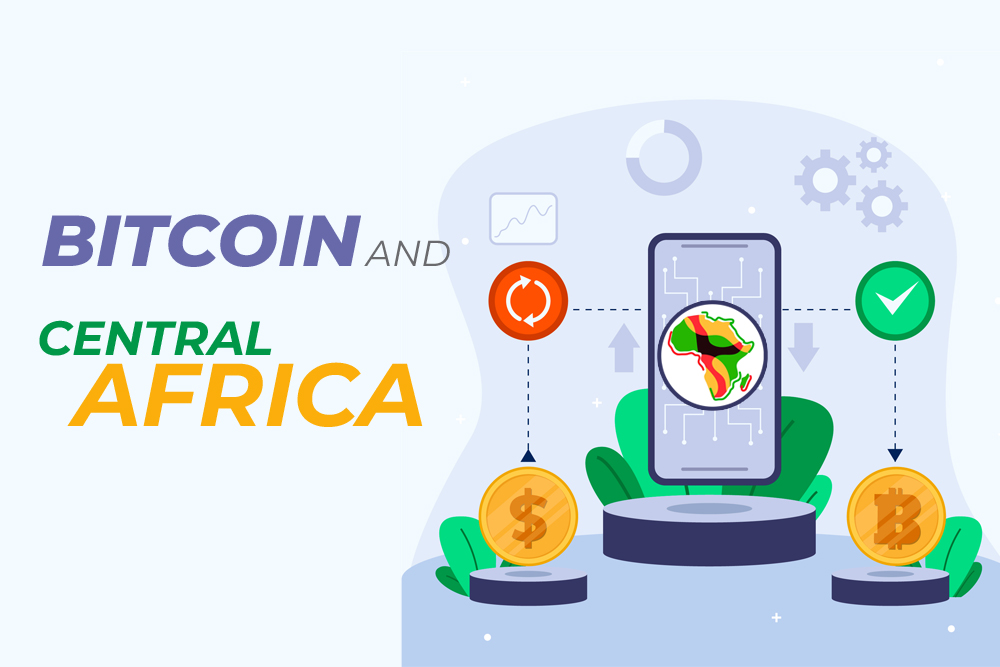
Ethereum has come a long way since its inception in 2015. The blockchain platform has gone through several upgrades to improve its performance, security, and scalability. The latest upgrade, known as the Shanghai upgrade, is expected to further enhance the network’s capabilities and pave the way for the much-awaited Ethereum 2.0.
The Shanghai upgrade is named after the Ethereum community’s conference held in Shanghai in 2019. The upgrade is also referred to as the “London Hard Fork” since it introduce several new features and improvements that require a hard fork. A hard fork is a significant change to the protocol that is not backward compatible with older versions. This means that all nodes and users need to upgrade to the latest version of the software to continue using the Ethereum network.
Reducing Transaction Fees with EIP-1559
One of the primary objectives of the Shanghai upgrade is to reduce transaction fees on the Ethereum network. Ethereum’s transaction fees have been a major concern for users and developers, especially during periods of high network congestion. The upgrade introduce a new fee structure that make it cheaper to transact on the network. Instead of the current gas limit, which sets a maximum fee for each block, the Shanghai upgrade introduce a new mechanism called “EIP-1559,” which allow users to bid on transaction fees. This make it easier to estimate the transaction fees, and it is expected to reduce the average cost of transactions.
Delaying the Difficulty Bomb and Optimizing Gas Costs
Another significant improvement introduced by the Shanghai upgrade is the “Difficulty Bomb Delay.” The difficulty bomb is a feature in Ethereum’s protocol that increases the difficulty of mining over time, making it more challenging to mine new blocks. This is done to encourage miners to switch to the new Proof of Stake (PoS) consensus mechanism that be introduced in Ethereum 2.0. However, the difficulty bomb also makes it more challenging to mine blocks on the current Ethereum network, which can slow down transaction processing times. The Shanghai upgrade delay the difficulty bomb for another 12 months, giving the Ethereum community more time to transition to PoS.
The Shanghai upgrade also introduce several new Ethereum Improvement Proposals (EIPs) that further enhance the network’s functionality. These include EIP-3198, which reduce the amount of data stored on the blockchain by compressing transaction receipts. This reduce the size of the blockchain, making it easier to synchronize nodes and improve network performance. EIP-3529 is another proposal that optimize the gas cost of certain operations on the Ethereum network, making it more efficient and cost-effective.
Paving the Way for Ethereum 2.0 with PoS and Reduced Block Rewards
The Shanghai upgrade is also expected to pave the way for Ethereum 2.0, which is a significant upgrade that introduce several new features and improvements to the network. Ethereum 2.0 transition from the current Proof of Work (PoW) consensus mechanism to PoS, which is more energy-efficient and secure. PoS also enable the network to process more transactions per second, making it more scalable. The Shanghai upgrade introduce some of the necessary changes to prepare the network for PoS, such as reducing the block rewards for miners.
In conclusion, the Shanghai upgrade is an essential step towards improving the Ethereum network’s performance, security, and scalability. The upgrade introduce several new features and improvements that make it easier and cheaper to transact on the network. It also delay the difficulty bomb and pave the way for Ethereum 2.0, which is expected to take the network to the next level. As with any major upgrade, there is always some risk involved, and users are advised to take the necessary precautions to ensure their funds are safe. Nevertheless, the Shanghai upgrade is a significant milestone for the Ethereum community and a testament to the network’s resilience and innovation.
Open your free digital wallet here to store your cryptocurrencies in a safe place.

In recent years, the cryptocurrency mining industry has experienced tremendous growth. With the rise of Bitcoin and other digital currencies, mining has become a popular way to earn a profit by using specialized hardware and software to solve complex mathematical equations.
The Potential of Flared Methane in the Mining Industry
One area of potential growth in this industry is the use of renewable energy sources to power mining operations. As concerns about climate change continue to rise, many miners are looking for ways to reduce their carbon footprint and increase sustainability.
One type of renewable energy that has caught the attention of miners is flared methane. Flared methane is a byproduct of oil drilling, and it is often burned off because it is considered a waste product. However, this gas can be harnessed and used to generate electricity, which can then be used to power mining operations.
Companies Leading the Way in Flared Methane Mining
Several companies have already begun exploring the potential of flared methane as a power source for mining. For example, Upstream Data, a Canadian company, has developed a mobile mining rig that can be powered by flared methane. This rig is designed to be easily transportable and can be deployed to remote locations to take advantage of flared methane sources.
Another company, Crusoe Energy Systems, has developed a system that captures flared methane and converts it into electricity. This electricity is then used to power mining rigs that are located on-site. Crusoe’s system has already been deployed in several locations in the United States, and the company has plans to expand its operations in the coming years.
Overcoming Challenges in the Use of Flared Methane
The potential of using flared methane to power mining operations is significant. According to a report by the World Economic Forum, flared methane could provide enough energy to power up to 8,000 mining rigs. This would not only reduce the environmental impact of mining but could also provide a significant economic opportunity for the oil and gas industry.
However, there are also some challenges associated with using flared methane as a power source. One of the biggest challenges is the variability of methane flaring. Flaring rates can change rapidly, making it difficult to ensure a consistent supply of power. This can result in downtime for mining operations, which can be costly for miners.
Another challenge is the logistics of transporting and storing the gas. Flared methane is often located in remote areas, which can make it difficult and expensive to transport. Additionally, storing the gas can be challenging, as it requires specialized equipment and safety protocols.
Despite these challenges, the potential of using flared methane to power mining operations is significant. As the cryptocurrency mining industry continues to grow, the demand for renewable energy sources will only increase. Flared methane has the potential to not only provide a sustainable energy source for mining but could also provide economic benefits for the oil and gas industry.
The Future of Flared Methane as a Sustainable Power Source
As the industry continues to develop, it is likely that we will see more companies exploring the potential of flared methane as a power source for mining. With the right technology and infrastructure in place, this could be a game-changer for the industry, providing a sustainable and cost-effective solution for powering mining operations.
In conclusion, the use of renewable energy sources is becoming increasingly important in the cryptocurrency mining industry. Flared methane is one such source that has the potential to provide a sustainable and cost-effective solution for powering mining operations. While there are challenges associated with using this gas, the potential benefits are significant, and it is likely that we will see more companies exploring this option in the coming years.
Open your free digital wallet here to store your cryptocurrencies in a safe place.

Azimut Invests €40M in Alps Blockchain: A Sign of Growing Blockchain Interest
Azimut, an asset management company based in Italy, has recently announced a major investment of €40 million in Alps Blockchain, a company focused on blockchain technology. The investment by Azimut represents a growing interest in the potential of blockchain technology to revolutionise various industries.
Blockchain technology is the core tech behind cryptocurrencies, the most popular of which are Bitcoin and Ethereum. Yet, blockchain technology’s potential applications go far beyond cryptocurrency. Blockchain technology can be used to build safe and tamper-proof systems for a variety of purposes, including supply chain management, voting systems, and secure data storage.One industry that blockchain technology has already impacted is the mining industry. Mining is the process by which new coins or tokens are created on a blockchain network. Miners are responsible for verifying transactions and adding them to the blockchain, and they receive a reward in the form of new coins or tokens. The mining process is crucial for the security and integrity of the blockchain network.
Addressing Energy Consumption in Blockchain Mining
However, mining can also be a resource-intensive process that requires significant computational power and energy consumption. Bitcoin, the largest cryptocurrency by market cap, has been estimated to consume more energy than entire countries like Argentina and the Netherlands, which has raised environmental concerns.There are attempts underway to make mining more environmentally friendly. Some mining corporations are looking into using renewable energy sources like solar and wind to power their operations. Furthermore, several cryptocurrencies, like as Ethereum, are going to switch to a different consensus process that will use far less energy than mining.
Aside from concerns about energy usage, blockchain technology has the potential to improve data privacy and security. Since more personal and sensitive data is shared online, secure and private data storage has become an urgent problem. Blockchain technology, by providing a decentralized and tamper-proof mechanism for data storage and sharing, may provide a potential solution to this problem. Data can be encrypted and kept on several nodes in the network using blockchain, making it practically impossible for hackers to access or change.
Blockchain Tech and its Applications
This has important implications for industries such as healthcare, where the privacy and security of patient data is critical. Blockchain-based solutions can enable secure sharing of medical records and other sensitive information among healthcare providers while maintaining patient privacy. In addition to healthcare, blockchain technology has the potential to transform various industries. The supply chain management industry is one area that has already seen significant interest in blockchain technology. Blockchain can be used to create a secure and transparent supply chain network, enabling businesses to track products from the point of origin to the end customer. This can increase efficiency and reduce costs, while also providing consumers with more transparency and trust in the supply chain.
Another potential application of blockchain technology is in voting systems. With concerns around the security and integrity of voting systems, blockchain technology offers a potential solution by providing a tamper-proof and transparent system for recording and verifying votes. This could increase trust in the electoral process and ensure the accuracy of election results.
Exploring the Future of Blockchain: Innovative Use Cases and Emerging Trends
Overall, the investment by Azimut in Alps Blockchain indicates the growing interest in blockchain technology and its potential applications. As more companies and institutions begin to explore the potential of blockchain technology, it is likely that we will see more innovative applications and use cases emerge. Blockchain technology has the potential to transform various industries, and its benefits outweigh the potential risks and challenges.
Yet, there are still obstacles that must be overcome before blockchain technology can realize its full potential. One issue that needs to be addressed is energy use, and the industry is already moving toward more sustainable alternatives. Another issue is the industry’s lack of standards and regulation, which can lead to uncertainty for firms and investors.Despite these challenges, the potential of blockchain technology is too great to ignore. The investment by Azimut in Alps Blockchain is just one example of the growing interest in the technology, and we can expect to see more investments and developments in the future. As the technology continues to evolve and mature, it has the potential to disrupt industries and create new opportunities for innovation and growth.
In conclusion, the investment by Azimut in Alps Blockchain represents a significant development in the blockchain industry. While blockchain technology has already had a significant impact on various industries, its potential applications are still being explored. The challenges of energy consumption and lack of standardisation and regulation need to be addressed, but the potential benefits of blockchain technology in data privacy, supply chain management, and voting systems make it a promising technology for the future. As more companies and institutions begin to invest in and explore the potential of blockchain technology, we can expect to see more innovative applications and use cases emerge in the coming years.
Open your free digital wallet here to store your cryptocurrencies in a safe place.

The adoption of national digital currencies has the potential to transform the financial landscape and create a more equitable financial system. Yet, as demonstrated with the eNaira in Nigeria, adoption can be slow due to a lack of infrastructure and knowledge.
Lack of infrastructure to support the ecosystem
The insufficient infrastructure to support the eNaira is one of the key reasons for its sluggish acceptance in Nigeria. Users must have a smartphone and internet connectivity to use the digital money, which can be difficult in a country where only 25 to 40 million people own a smartphone. This is worsened by the absence of reliable internet connectivity, particularly in rural regions. To achieve widespread use of digital currencies, there must be a concerted push to expand internet connectivity and smartphone usage, particularly in disadvantaged areas.
Barriers to Adoption
In addition to technical issues, there is a major dearth of education in Nigeria on the benefits of digital currencies. Many individuals are still wary of digital currencies’ security and trustworthiness, and there is a widespread lack of understanding about how they work. Governments and institutions must invest in education initiatives to raise knowledge about the benefits of digital currencies and how to successfully use them.
Another barrier to adoption is the absence of transaction options and retailers ready to take digital currency. Despite efforts by the Central Bank of Nigeria to encourage banks to promote the use of eNaira, merchant acceptance remains low. This limits digital currencies’ utility, particularly for ordinary retail transactions. Governments and organizations must collaborate to encourage merchant adoption by providing incentives like as cheaper transaction fees or tax advantages.
Furthermore, Nigeria is currently experiencing acute cash shortages, which has resulted in riots and protests across the country. While the eNaira has the potential to be a solution to the issue, its low adoption and infrastructure challenges have limited its utility. Governments and organizations must move quickly to address these concerns and make digital currencies widely available as a cash substitute.
Digitalization
As the world grows more digital, the advantages of national digital currencies cannot be overlooked. Digital currencies provide several benefits, such as speedier transactions, improved security, and lower expenses. They can also help people gain financial inclusion, especially those who are underserved by traditional banking institutions.
But, in order for digital currencies to become a viable alternative to cash, governments and institutions must take meaningful actions to overcome adoption barriers. This involves infrastructure investments, education efforts, and incentives for merchant adoption. Furthermore, there must be a concerted effort to resolve public concerns about security and reliability, as well as to create public trust in digital currencies
The Central Bank of Nigeria’s attempts to promote the eNaira have been well-intentioned, but more has to be done to remove the barriers to acceptance. This includes collaborating with mobile network providers to promote internet access and smartphone penetration, collaborating with retailers to incentivize eNaira use, and investing in public awareness education programs.
Another possibility is to use blockchain technology to develop a decentralized digital currency. Because blockchain technology is known for its security features, this could help alleviate concerns about security and reliability. Furthermore, because it does not require a centralized body to oversee its use, a decentralized digital currency may be more accessible and inclusive than a centralized one.
Final thoughts
To conclude, while the adoption of national digital currencies such as the eNaira has been delayed in Nigeria, the potential benefits cannot be overlooked. Adoption problems must be solved immediately to ensure that digital currencies can deliver on their promise of building a more egalitarian financial system. To promote the use of digital currencies, governments and organizations must collaborate to invest in infrastructure, education, and incentives. This will necessitate considerable effort and collaboration on the part of several parties, including regulators, financial institutions, mobile network carriers, and merchants.
As the world moves toward a more digital economy, we must embrace the promise of digital currencies to establish a more inclusive financial system. The difficulties encountered in Nigeria’s adoption of the eNaira show the necessity for a concerted effort to overcome the infrastructure and education issues that can stymie adoption. Governments and institutions can collaborate to create an environment that supports the widespread adoption of digital currencies, resulting in a more inclusive and accessible financial system for all.
Open your free digital wallet here to store your cryptocurrencies in a safe place.

Square Enix, the Japanese video game publisher behind iconic titles like Final Fantasy and Tomb Raider, has announced a collaboration with Polygon, a major Ethereum-based blockchain platform, to create an NFT art project. The collaboration will investigate the convergence of blockchain technology, gaming, and digital art, showcasing the potential for novel applications in the fast growing blockchain ecosystem.
The cooperation will result in the creation of one-of-a-kind NFTs based on original artwork from Square Enix’s games, which will be minted on the Polygon blockchain. Polygon was selected as a partner because of its scalability and cheap transaction fees, making it a perfect platform for producing and trading NFTs.
Non-fungible tokens, or NFTs, are one-of-a-kind digital assets that may be bought and sold on a blockchain. They can represent several types of digital content, such as artwork, music, and video games. As a means of proving ownership and authenticity in the digital realm, NFTs are gaining popularity as a new way for artists and producers to commercialise their work.
The collaboration between Square Enix and Polygon is not the first of its kind; other gaming firms and blockchain platforms have also investigated the convergence of gaming and NFTs. The relationship is noteworthy, though, because of Square Enix’s standing in the game business, with the company having a vast and committed fanbase worldwide.
In addition to investigating the possibilities of NFTs, the collaboration will explore the usage of blockchain technology in gaming. Blockchain technology has the potential to revolutionize the gaming business by enabling new types of games such as decentralized gaming and player-owned economies.
Square Enix and Polygon’s collaboration demonstrates the growing interest in blockchain technology among established firms and industries. We should expect more collaborations between traditional firms and blockchain startups as the promise of blockchain technology becomes more publicly recognized.
One of the primary advantages of blockchain technology is its ability to increase transaction trust and transparency. This is especially significant in the gaming sector, where concerns like fraud, cheating, and ownership and authenticity disputes are widespread. Blockchain technology allows for the creation of a tamper-proof and transparent record of all transactions, which makes it easier to assure fair and equal gameplay.
The collaboration between Square Enix and Polygon is also significant in terms of the potential for NFTs to establish new revenue streams for artists and creators. NFTs give a new opportunity for creators to monetise their work and establish an audience by producing unique digital assets that can be bought and traded on a blockchain.
The usage of NFTs in gaming is still in its early stages, but it has the potential to transform the industry by allowing players to interact with games in new ways and producers to monetize their work. The collaboration between Square Enix and Polygon is just one example of the numerous use cases that are emerging in the blockchain ecosystem.
We should expect more cooperation between established organizations and blockchain startups, as well as more new use cases for blockchain technology, as blockchain technology evolves and matures. The collaboration between Square Enix and Polygon is an exciting step in this quickly expanding field, and it will be interesting to see how the initiative evolves and what new prospects it generates for the gaming business and digital art.
Open your free digital wallet here to store your cryptocurrencies in a safe place.

A revolutionary digital asset, Bitcoin has captured the attention of the world since its creation in 2009. One particularly noteworthy moment in its journey is the first ever Bitcoin transaction. On January 12, 2009, the creator of Bitcoin, Satoshi Nakamoto, sent a transaction to computer scientist and cryptographer, Hal Finney. This transaction marked the beginning of Bitcoin’s journey from being a digital asset with no real-world value to the widely accepted and valuable cryptocurrency it is today.
Hal Finney, the recipient of the first Bitcoin transaction from Satoshi Nakamoto, was an early Bitcoin enthusiast and developer. He was one of the first people to understand the potential of digital currency and was an active contributor to the development and testing of the Bitcoin software. He was an early adopter of the technology and supported the growth of the network. He was also the first person to run a bitcoin client on his computer and famously tweeted “Running bitcoin” on January 11th, 2009.
He was a pioneer in the field and was one of the first people to understand the potential of Bitcoin. He was also an active member of the cypherpunk community and was involved in the development and testing of the Bitcoin software.
In addition, Hal Finney’s tweet “running bitcoin” on January 11, 2009, is considered as one of the first public demonstrations of the software and it was a significant moment in the early days of Bitcoin. His tweet is considered as the first recorded evidence of the successful running of the software and the first recorded instance of Bitcoin mining.
Before this transaction, Bitcoin was used primarily as a digital asset, with no real-world value. Satoshi’s transaction to Hal marked the first time Bitcoin was used to transfer funds, and it marked a significant milestone in the cryptocurrency industry. It demonstrated the potential of Bitcoin as a medium of exchange and sparked the interest of many other early adopters. Hal Finney’s early involvement and support were essential in laying the foundation for the cryptocurrency’s success. He was a vocal advocate for Bitcoin and helped to promote its growth and adoption.
The first-ever Bitcoin purchase was made by a man named Laszlo Hanyecz on May 22, 2010, who bought two pizzas for 10,000 BTC. This transaction is now celebrated annually as ‘Bitcoin Pizza Day‘ by Bitcoin enthusiasts worldwide.
Since then, Bitcoin has grown in popularity, with millions of people around the world now using it as a means of exchange and store of value. The cryptocurrency industry has evolved significantly over the last decade and continues to grow at an unprecedented rate. The value of Bitcoin has gone from being worth a few cents to reaching an all-time high of over $60,000 per coin. It has also sparked the creation of thousands of other digital currencies, known as altcoins.
The growth of Bitcoin is still far from over. It has become a household name and has attracted the attention of investors, businesses, and governments worldwide. Bitcoin has also played a crucial role in the development of blockchain technology, which has the potential to revolutionise various industries.
Bitcoin’s journey so far has been nothing short of remarkable. From the first transaction sent by Satoshi Nakamoto to Hal Finney, to the widespread acceptance and adoption of the digital currency, Bitcoin has come a long way. The significance of that first transaction cannot be overstated; it was the start of a journey that has led to the creation of a new asset class and a new way of thinking about money.
The first Bitcoin transaction was a pivotal moment in the history of cryptocurrency. Hal Finney, the recipient of the first transaction, was one of the first people to understand the potential of Bitcoin.
Open your free digital wallet here to store your cryptocurrencies in a safe place.

Ethereum now has privacy thanks to zero-knowledge proof technologies, specifically zk-STARKs. But before we can assess zk-STARKs, it is important to define a zero-knowledge proof (ZKP).
Understanding the Basics of Zero-Knowledge Proofs (ZKPs)
A ZKP is a cryptographic technique that enables a prover to confirm another person’s assertion without disclosing any supporting data. zk-STARKs and zk-SNARKs are two of the most compelling zero-knowledge technologies available today, standing for zero-knowledge succinct non-interactive argument of knowledge and zero-knowledge scalable transparent argument of knowledge, respectively. These technologies allow one party to demonstrate their knowledge to another without actually revealing the knowledge, making them both scaling technologies, as they can enable faster proof verification, and privacy-enhancing technologies, as they reduce the amount of information shared between users.
zk-STARKs, specifically, enable users to communicate validated data or carry out computations with a third party without the other party knowing the data or results of the analysis. They are an advancement over zk-SNARKs because of their reduced algorithmic complexity, making them easier for even crypto experts to find mistakes in. These types of knowledge testing tools are primarily used to build highly private and secure systems that are decentralized and can only be accessed under specific, difficult-to-obtain conditions, such as those found in cryptocurrencies. These systems not only secure the network but also protect and anonymize users.
Comparing zk-SNARKs and zk-STARKs
There are a few main differences between zk-SNARKs and zk-STARKs. Firstly, zk-SNARKs require a reliable configuration phase, while zk-STARKs create verifiable computing systems without trust using publicly verifiable randomness. Secondly, zk-STARKs are more scalable in terms of speed and computational size when compared to zk-SNARKs. And thirdly, zk-SNARKs are vulnerable to attack by quantum computers, while zk-STARKs are currently immune. However, it is important to note that STARKs have larger proof sizes than SNARKs, meaning they take longer to verify and require more gas. In addition, the STARKs developer community is smaller and has less documentation compared to SNARKs.
Support from the Developer Community
Despite these differences, both the SNARKs and STARKs communities have support from developers. The Ethereum Foundation, in particular, has shown support for Starkware, a company using STARKs, by awarding them a $12 million grant. While documentation for STARKs is currently less comprehensive than that for SNARKs, the technical community has recently created more resources for those interested in the technology.
Open your free digital wallet here to store your cryptocurrencies in a safe place.

Bitcoin, the world’s first decentralized digital currency, has seen growing adoption in Central Africa in recent years. This trend is driven by a number of factors, including the region’s high inflation rates, political instability, and lack of access to traditional banking services.
One of the main reasons for the adoption of Bitcoin in Central Africa is the high inflation rates that many countries in the region face. Inflation erodes the purchasing power of a currency, making it difficult for people to save and plan for the future. By using Bitcoin, which is not subject to inflation, individuals and businesses in Central Africa can protect their wealth and preserve its value over time.
Political instability is another factor driving the adoption of Bitcoin in Central Africa. Many countries in the region have a history of coups, civil wars, and political unrest, which can lead to the confiscation of assets and bank accounts. By using Bitcoin, which is decentralized and not controlled by any government or institution, individuals and businesses in Central Africa can protect their assets from seizure and avoid the risks associated with political instability.
In addition to high inflation and political instability, many people in Central Africa lack access to traditional banking services. In some rural areas, there are no banks or financial institutions, making it difficult for individuals and businesses to access credit, save money, and make payments. By using Bitcoin, which can be easily accessed and used with a smartphone and internet connection, people in Central Africa can enjoy many of the same benefits of traditional banking without the need for physical infrastructure.
The adoption of Bitcoin in Central Africa is also supported by a growing ecosystem of businesses and services that accept the cryptocurrency. This includes merchants who accept Bitcoin for goods and services, as well as exchanges and wallet providers that facilitate the buying and selling of Bitcoin. This ecosystem is helping to drive the adoption of Bitcoin and is making it easier for people in Central Africa to use the cryptocurrency in their daily lives.
In addition to the factors mentioned above, there are several other reasons why Bitcoin is gaining popularity in Central Africa. The increasing use of mobile phones and internet access in the region has made it easier for people to use Bitcoin and other digital currencies. The growing awareness of the benefits of Bitcoin, such as its decentralized nature, low transaction fees, and fast transaction times, has also contributed to its increasing popularity in the region. The growing adoption of Bitcoin in other parts of the world has also played a role in its acceptance in Central Africa.
Furthermore, the Central African Republic has recently unveiled its own cryptocurrency, Sango Coin, which will be the second cryptocurrency, after Bitcoin, to be recognized as legal tender in the country. The President of the Central African Republic has voiced support for blockchain, cryptocurrencies, and Bitcoin, further demonstrating the increasing interest and involvement in the cryptocurrency space in the region.
Overall, the adoption of Bitcoin in Central Africa is driven by a combination of economic, political, and technological factors. As the ecosystem of businesses and services that accept Bitcoin continues to grow, it is likely that the adoption of the cryptocurrency will continue to increase in Central Africa.
Open your free digital wallet here to store your cryptocurrencies in a safe place.


Cryptocurrency users are still a small minority. The total number of users was at 106 million as of January 2021. That sounds like a lot, but when you consider a global population that is nearing 8 billion, you can see that it is just a tiny fraction of people using crypto.
Whether you are in crypto or not, it is going to have an increasing effect on business. You can see Bitcoin mining operations selling shares on stock exchanges, large businesses looking into uses for crypto coins, and more people taking an interest in buying and using cryptocurrency.
At the current trend, crypto coins are becoming more common every year. If it holds, it might not be a matter of if people start using different cryptocurrencies, it could just be a question of when.
In the digital age, businesses are now connected internationally like they never before. Beyond the large multinationals, it is increasingly becoming common for smaller businesses to have significant international connections. This is not only true as it concerns deals with other companies, but businesses now have employees or contractors they work with from around the world.
Using cryptocurrency as a medium of exchange for international transactions could solve a lot of problems for these businesses. First, cryptocurrency could ease the burden of having to convert currency for several different countries. Beyond that, it could also make transactions faster, cheaper and more convenient by cutting out the traditional middlemen that would typically be in the middle of these transactions.
One of the factors that have held back many cryptocurrency markets is the lack of support from mainstream institutions. Banks wouldn’t let you make transactions with crypto exchanges, and it was hard to find businesses that would allow you to use your cryptocurrency. This is changing rapidly.
Beyond the ability of investors to use an ultra fast trading app to make trades, we now see a range of big institutional investors buying cryptocurrency. Along with that, some of the world’s largest financial businesses are starting to work with crypto. As an example, PayPal started offering a range of cryptocurrency services earlier this year. You also have major credit card companies that are starting to work with crypto on a limited level.
One of the main claims of many crypto skeptics is that the coins have no inherent value. This is true in a sense. The value of most crypto coins is solely based on the perception of people in the market. While that might be true, you could make the same argument for most fiat currencies. The value is based on the fact that people will accept it in exchange for goods and services.
Crypto has an advantage over many fiat currencies: the fact that many crypto coins have a limited supply. As inflation acts on fiat currencies, crypto could grow in popularity as a hedge. In the future, many investors will hold crypto in the way that they hold gold as a protection against inflation.
Raising or distributing equity usually means creating conventional shares of the business. While this could be a way to raise money or provide value to employees, it does come with a range of hurdles. One way to get around many of these hurdles would be to create crypto coins that represent shares in the company.
Instead of jumping through all of the regulatory hoops to issue shares, the business could give people crypto coins as equity. Instead of holding an IPO, the business could do an ICO as a way to raise capital from investors.
With the rise in crowdfunding platforms, the ability to raise money is easier than it ever has been. These platforms not only make it easy to raise money from the public, but they also offer a level of transparency that is popular among those looking to donate or invest. With that said, these platforms often take a significant portion of the funds in fees.
Using a blockchain wallet for crowdfunding could be a way to get the transparency of a crowdfunding platform while avoiding the fees. This would allow those looking to raise funds to do so off a platform, but with the blockchain ledger, potential donors or investors could still see the donations coming in.
Crypto is a field that is always evolving. As businesses see the benefits and new applications become available, it will become more common. With that said, the markets are unpredictable. The only thing that we can be sure of is that there will be ups and downs along the way.
Open your free digital wallet here to store your cryptocurrencies in a safe place.


The debate about Bitcoin’s inventor, known as Satoshi Nakamoto but otherwise shrouded in mystery, has raged for years. As Bitcoin continues to rise in value, this unknown inventor is presumed to have become a very rich individual indeed. When Satoshi invented Bitcoin, was he driven to profit, mining and hoarding early Bitcoin aiming to accumulate great wealth?
In 2013 first Sergio Demian Lerner presented his research on the early mining patterns Satoshi is presumed to have taken, it revealed around 1 million BTC (now worth around $10bn) hoarded by the creator. For many who see Bitcoin as an anti-establishment currency with an equalizing power, to attribute such vast wealth to Bitcoin’s creator is anathema, undermining the main narrative around Bitcoin and Nakamoto’s original motives. If Nakamoto is as driven by capitalist economics as the nearest banker, is Bitcoin fundamentally different from traditional currencies after all?
Nakamoto’s defenders argued that these 1 million missing Bitcoin were simply forgotten by early miners, and the inventor himself had no such hoard. Indeed, even researching these Bitcoin was taboo. Yet Lerner was unsatisfied with this answer. That’s why he has spent the last seven years unravelling the mining techniques used to unearth these early Bitcoin. What these techniques reveal is that Satoshi (if that is who mined them, Lerner refers to this individual as “Patoshi” to emphasize that we can’t truly know) seems to have been protecting the security of the network rather than pursuing profit after all. The reputation of Bitcoin, and its mysterious inventor, remains intact.
Early Mining Techniques
In order to learn more about the missing Bitcoin – and the individual who mined them – Lerner decided to remine the first 18,000 Bitcoin blocks to see what it revealed. He assumed that these blocks would have been mined with software that was similar, if not identical, to that which came with the first Bitcoin release. This public code was how early miners set about Bitcoins first blocks. The “Patoshi” pattern of how these Bitcoin were mined could ultimately reveal something about the motives of Bitcoin’s inventor, assuming Nakamoto and Patoshi are one and the same.
Through remining these early blocks, Lerner came to a startling discovery. Patoshi’s software was in fact nothing like the software being used by other early Bitcoin miners. Was this Nakamoto giving himself a leg up in the early gold rush of Bitcoin mining? The difference in the mining patterns of the public software and Patoshi’s processes became the keystone of Lerner’s research. Two theories stood out. Firstly, that Patoshi was using an early version of today’s pooled mining processes by combining multiple CPUs. The second theory – seemingly borne out in Lerner’s research – is that Patoshi was multi-threading.
Patoshi’s Multi-Threading
Multi-threading is a hashing technique using intensive computer processing to sweep for multiple nonces (the cryptographic element that Bitcoin miners are searching for) at once, rather than on an individual basis. By rescanning the early blocks, Lerner was able to assess which nonces Patoshi discovered, thus revealing the patterns by which Bitcoin’s inventor was mining blocks. Ultimately, Lerner has demonstrated that Patoshi/Nakamoto was generally finding higher-value nonces thanks to the multi-threading technique, and not because they had superior processing power, but because they had a better process for using their CPU.
Ideology Before Profit
Lerner’s meticulous analysis of the early mining patterns attributed to Bitcoin’s founder reveal that each time Patoshi mined a new block, his miner was turned off for a short interval. If Nakamoto was driven by profit, this is contradictory behaviour as it gives the rest of the community an opportunity to unearth new blocks. Lerner posits that Nakamoto wanted to see fair competition amongst early miners, and distribute Bitcoin equally at the start of the network.
At the same time, Patoshi’s multi-threading would have allowed them to uncover new blocks when they were not being mined by other early users, thus enabling the network to continue ticking over. These patterns have led Lerner to argue forcefully that the security of the network – and not profit – was Nakamoto’s motivation for their early mining patterns.
Still Unknown
It remains an assumption that Patoshi and Nakamoto are one and the same, and the identity of this individual is still unknown. But Lerner’s research strongly indicates that profit was not an early motivator of the Patoshi pattern.
Kristin Herman is a tech enthusiast and a project manager at Essayroo.com and Boomessays.com online writing services. When she takes a break from the screen she likes to curl up with a good book, albeit one about cryptotrends and digital landscapes!
Open your free digital wallet here to store your cryptocurrencies in a safe place.